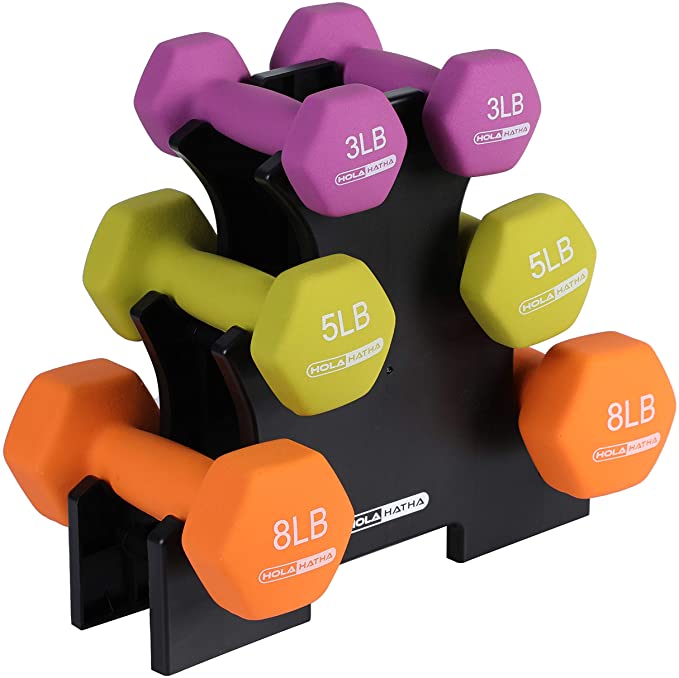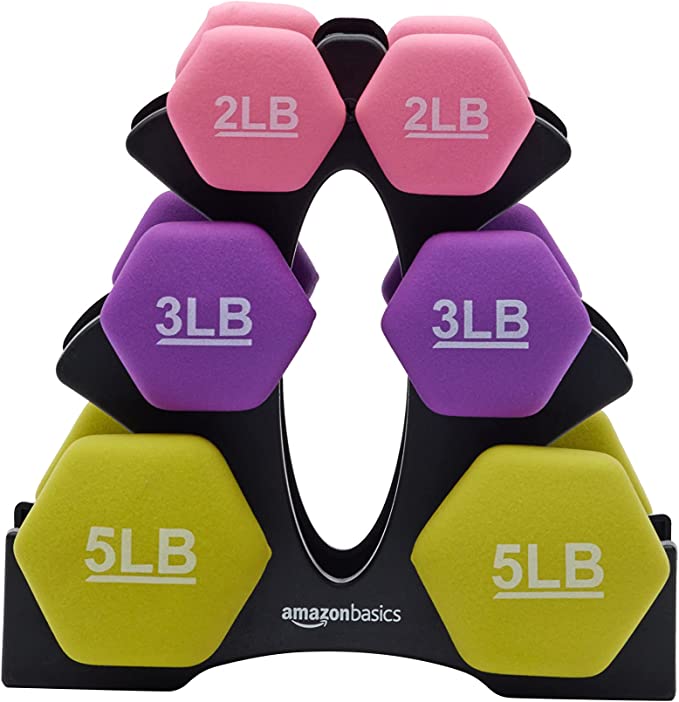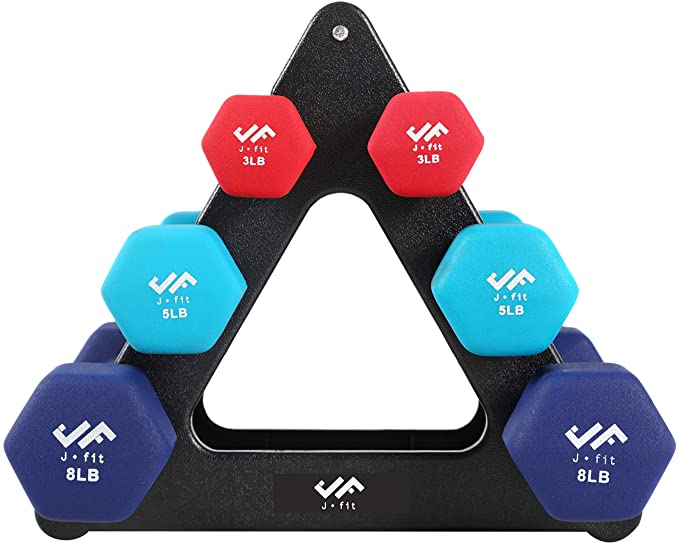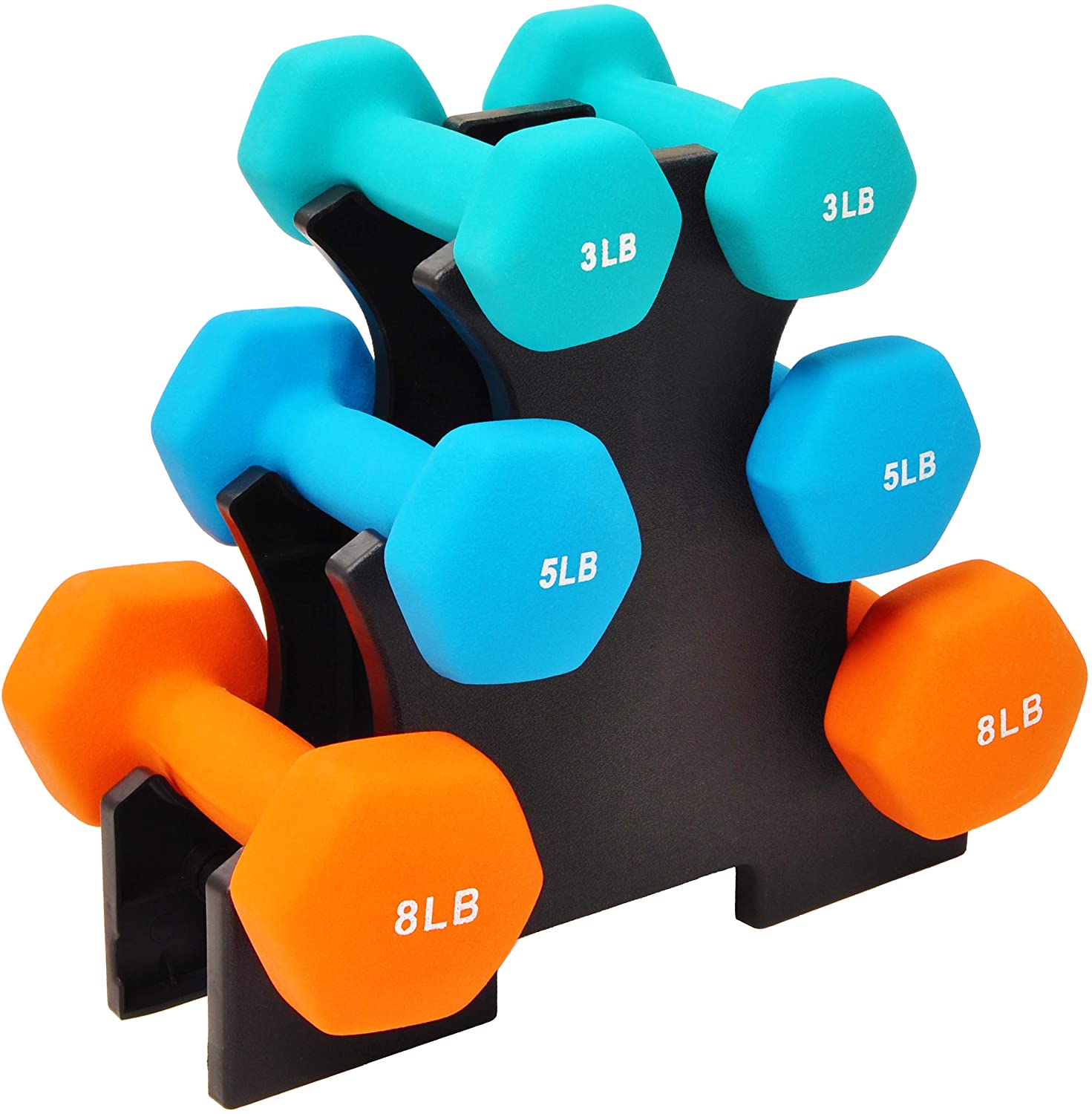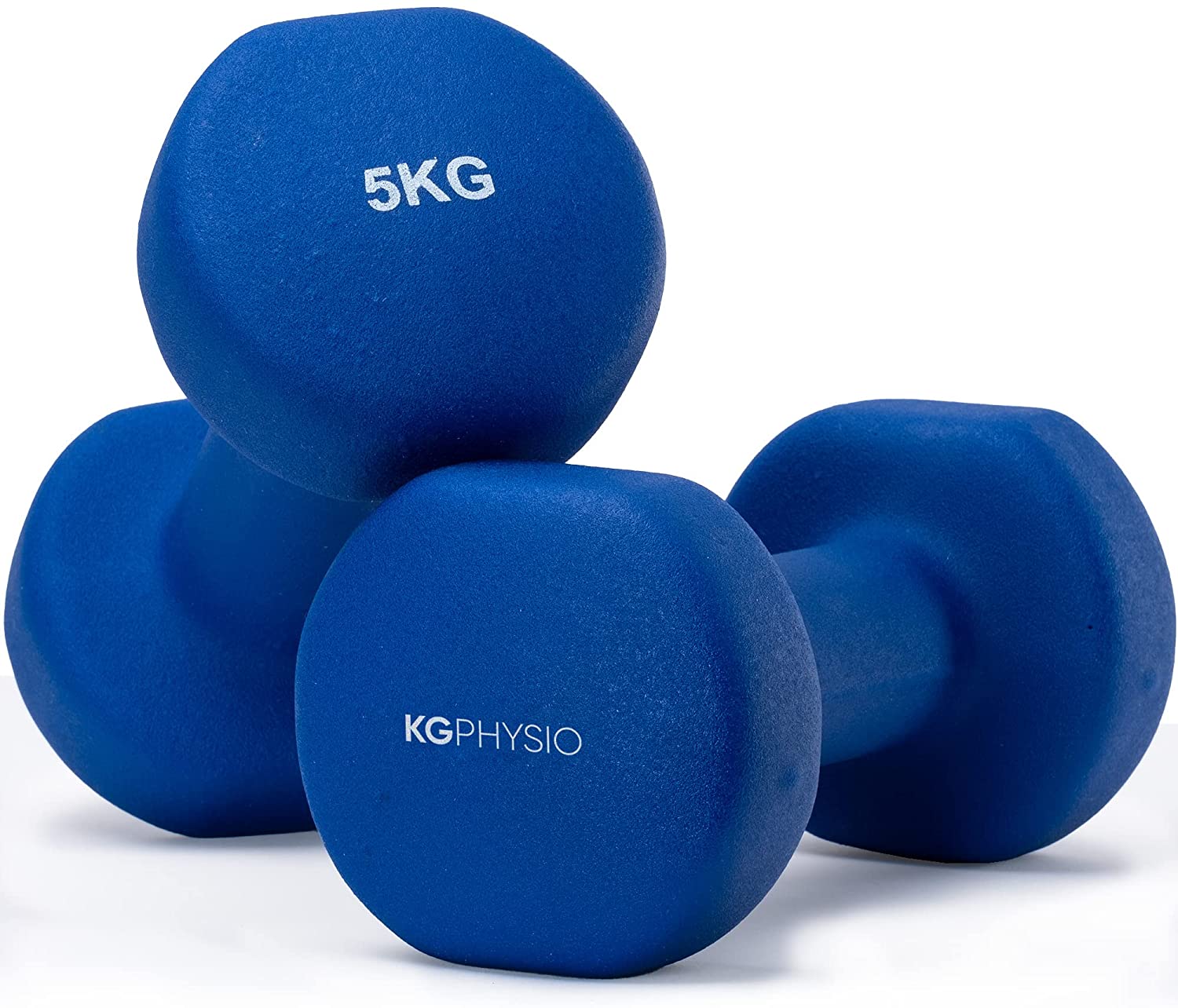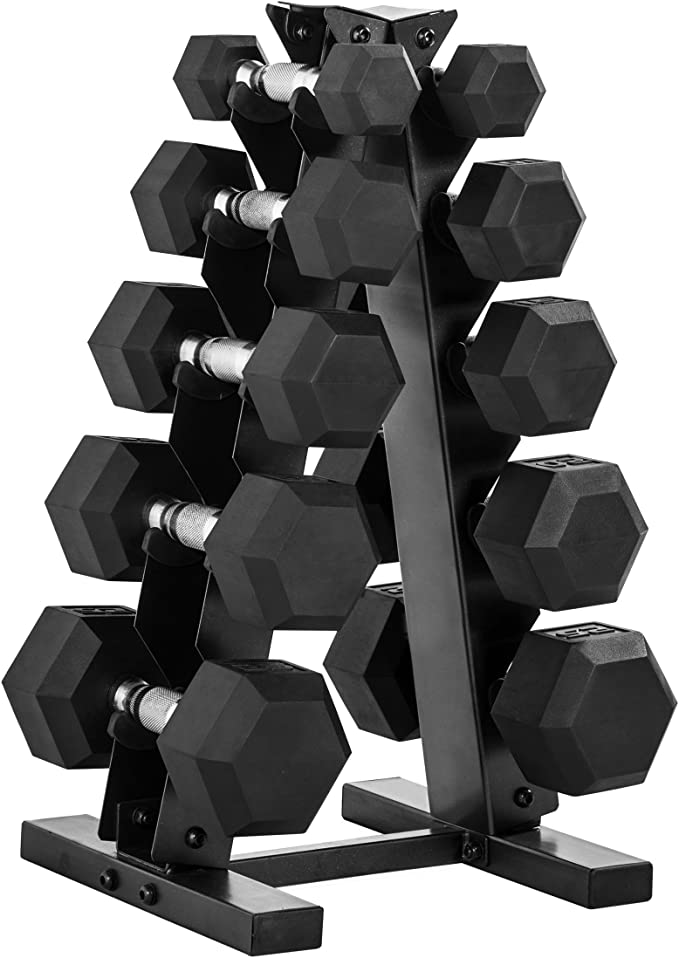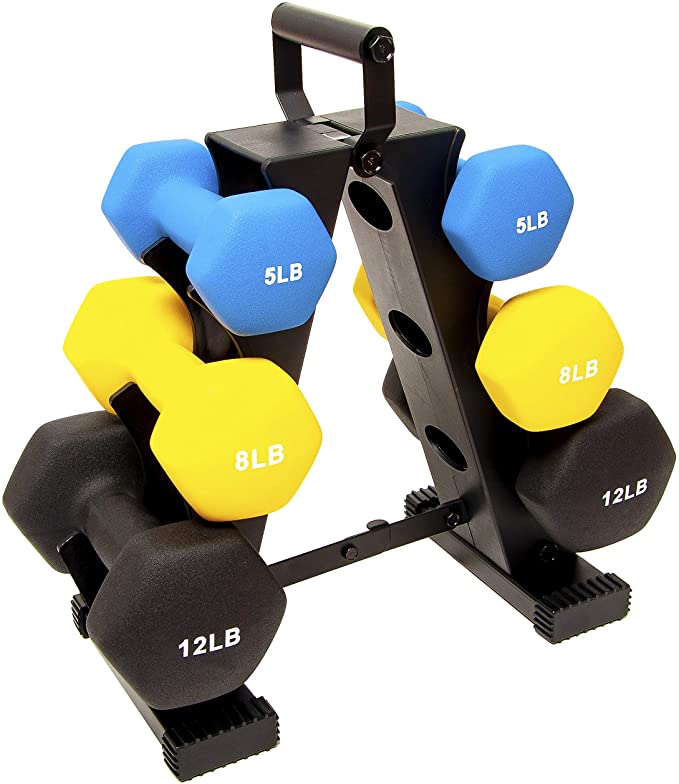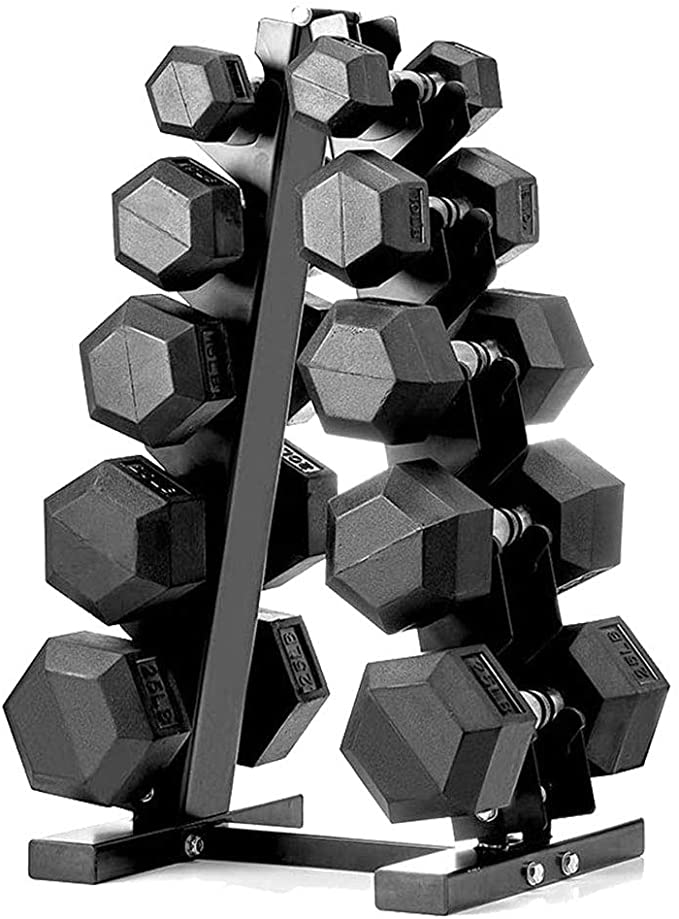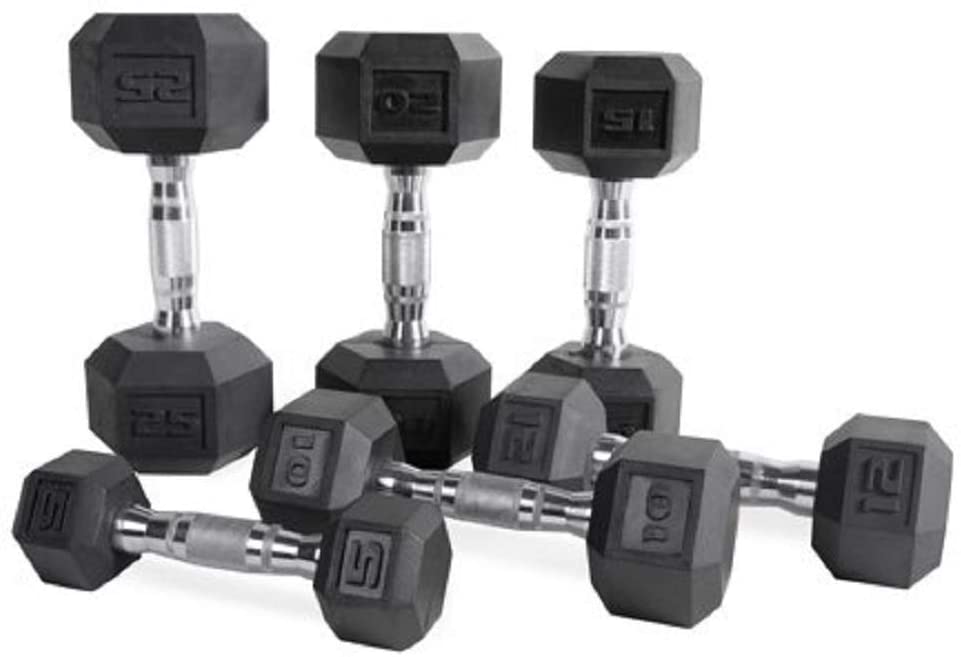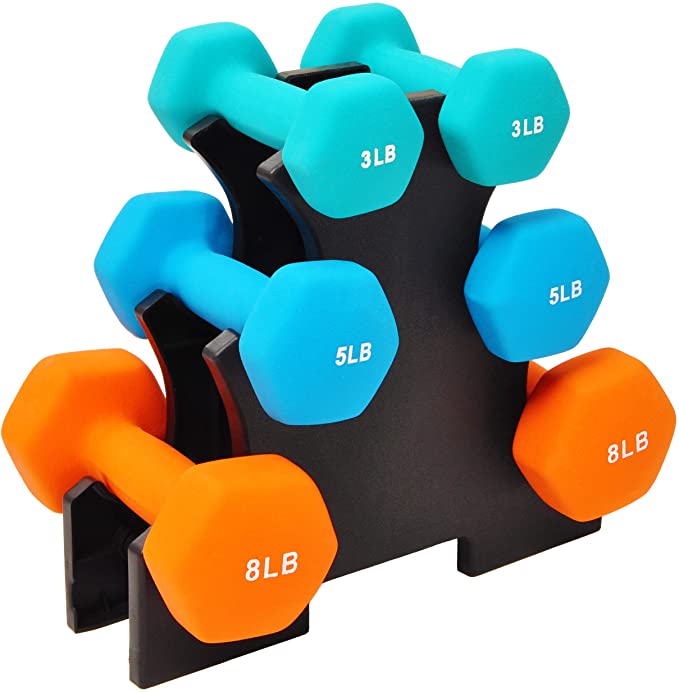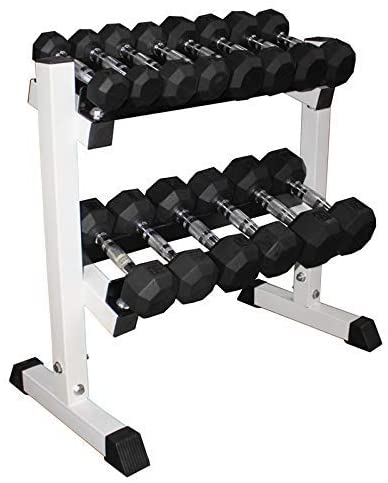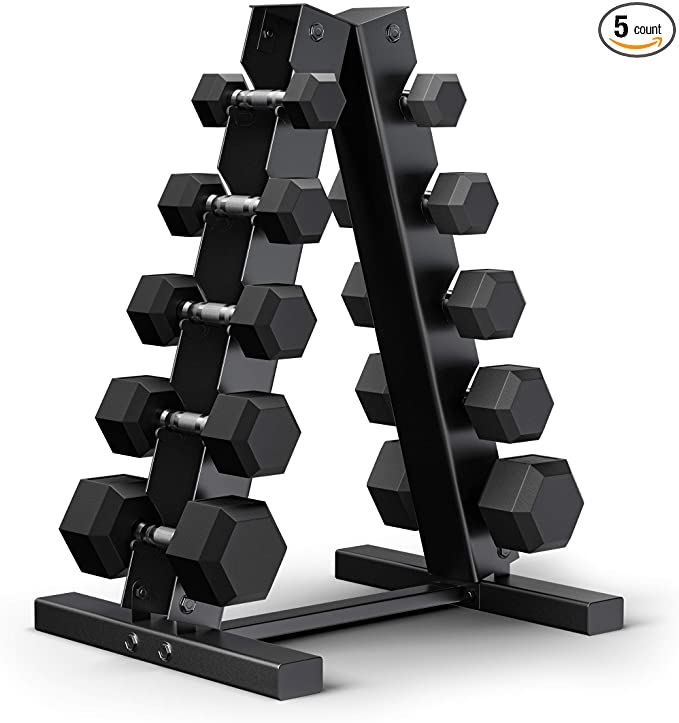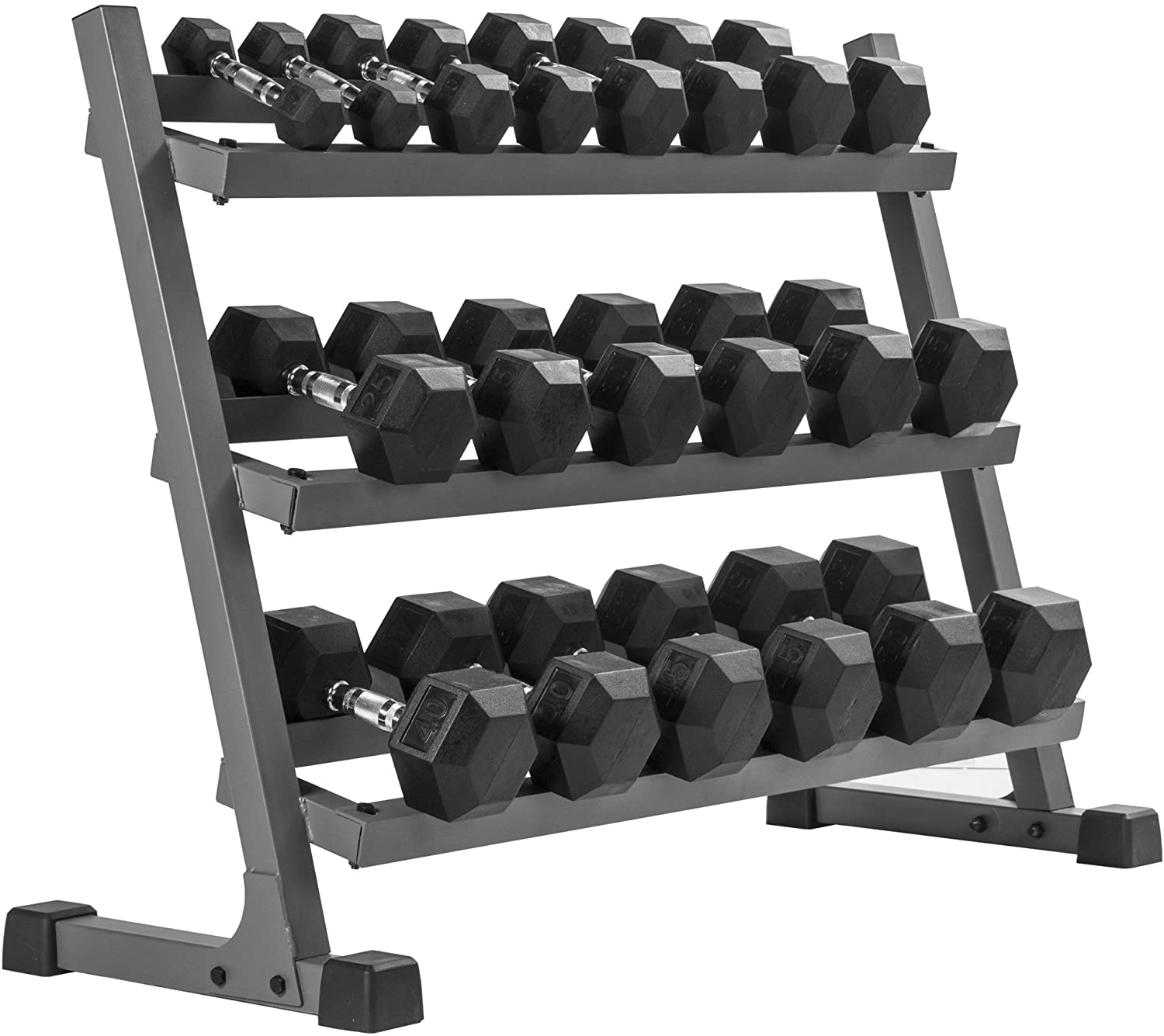HolaHatha Non-Slip Neoprene Dumbbell Weight Set, 3-Pairs
Last updated: April 28, 2023
Interval training is a breeze with these lighter weights. The textured coating is a joy to hold and resists slippage even when the sweat starts flowing. The stand is quite durable and relatively easy to assemble.
We looked at the top Dumbbell Weight Sets and dug through the reviews from some of the most popular review sites. Through this analysis, we've determined the best Dumbbell Weight Set you should buy.
Product Details
Key Takeaway: These weights are petite but tough and great for beginners.
In our analysis of 38 expert reviews, the HolaHatha Non-Slip Neoprene Dumbbell Weight Set, 3-Pairs placed 8th when we looked at the top 13 products in the category. For the full ranking, see below.From The Manufacturer
With this free weight set, you can do aerobics, bicep curls, lunges kickbacks, and more for versatile workouts that will never be boring. The handle size is suitable for smaller hands and easy to grip, which is great for those who struggle with bulkier handles. Featuring hex-shaped ends, you’ll get peace of mind knowing the hex design will stop the dumbbells from rolling away during use, while the non-slip coating provides excellent grip, even when sweating.
